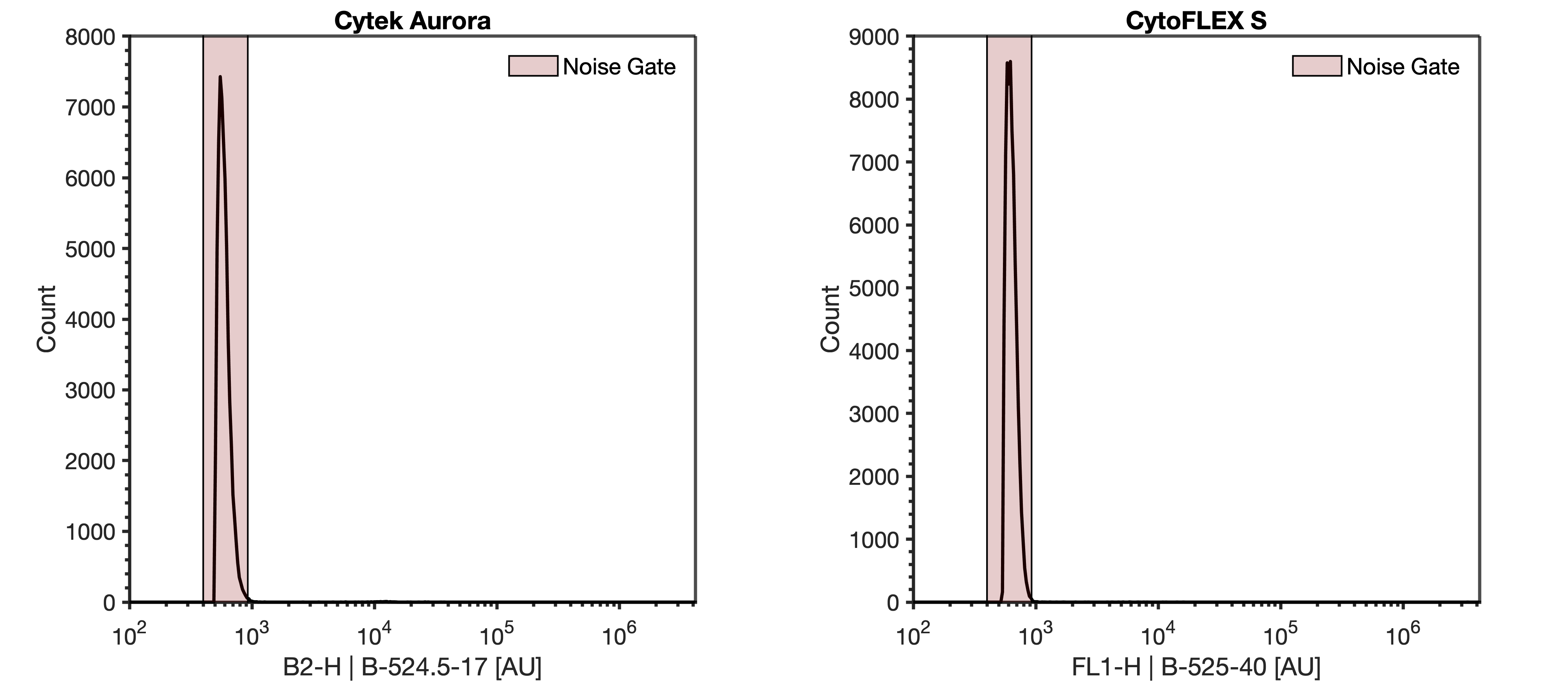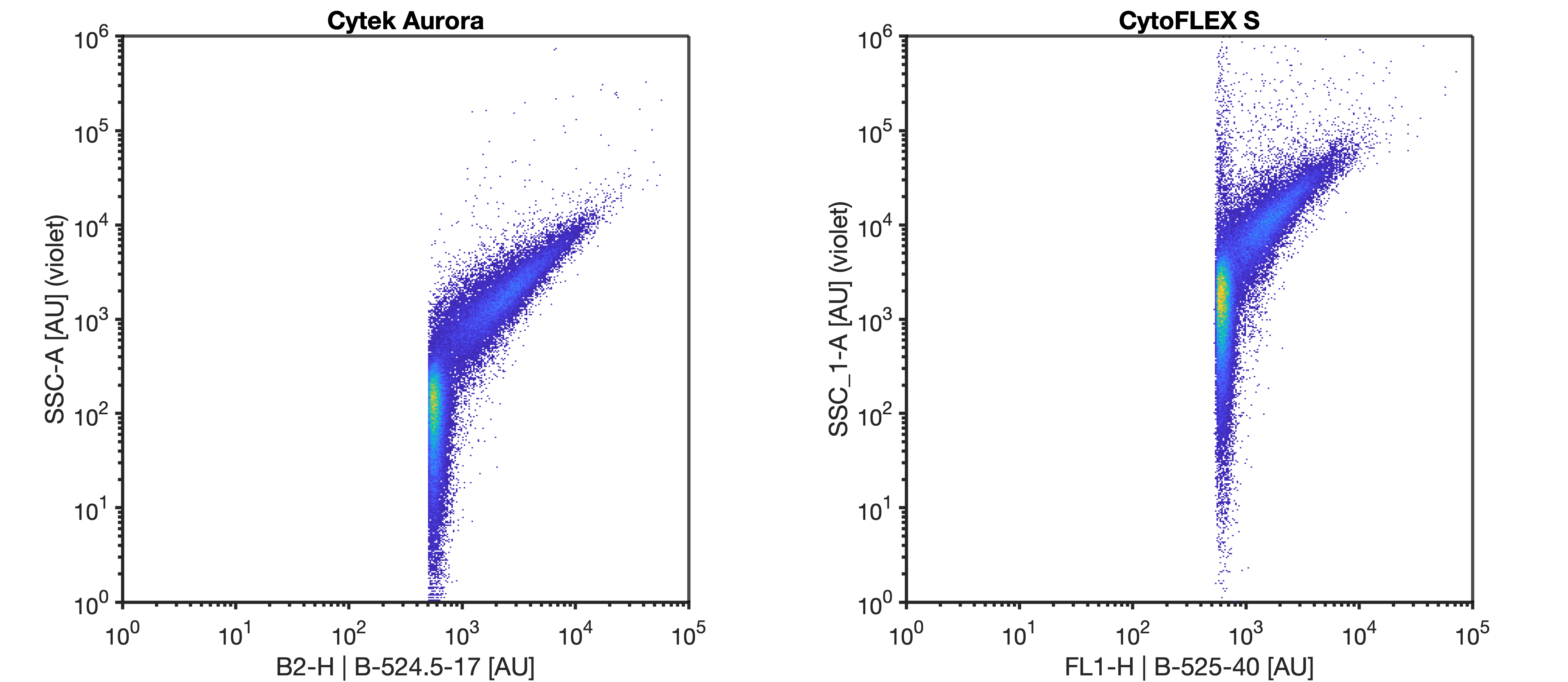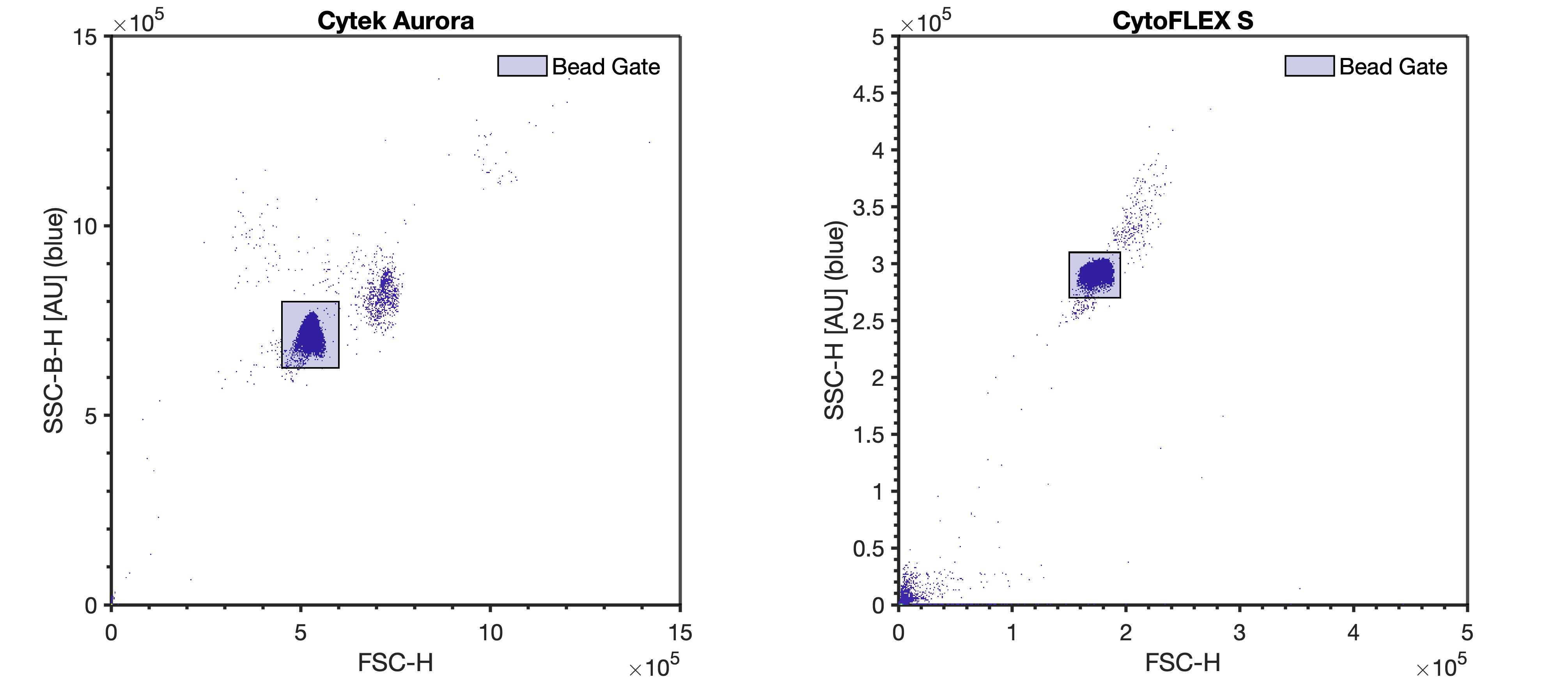Resource 5: rEV Scatter Detector Setting Incrementation
Joshua A Welsh, Sean M Cook, Jennifer Jones, Joanne Lannigan, Vera A. Tang
Disclaimer
This protocol summarizes key steps for a specific type of method, which is one of a collection of methods and assays used for EV analysis in the NCI Translational Nanobiology Section at the time of submission of this protocol. Appropriate use of this protocol requires careful, cohesive integration with other methods for EV production, isolation, and characterization.
Abstract
Flow cytometry (FCM) is a common extracellular particles (EPs), including viruses and extracellular vesicles (EVs), characterization method. Frameworks such as MIFlowCyt-EV exist to provide reporting guidelines for metadata, controls, and
data reporting. However, tools to optimize FCM for EP analysis in a systematic and quantitative way are lacking. Here, we demonstrate a cohesive set of methods and software tools that optimize FCM settings and facilitate cross-platform comparisons for EP studies. We introduce an automated small particle optimization (SPOT) pipeline to optimize FCM fluorescence and light scatter detector settings for EP analysis and leverage quantitative FCM (qFCM) as a tool to further enable FCM optimization of fluorophore panel selection, laser power, pulse statistics, and window extensions. Finally, we demonstrate the value of qFCM to facilitate standardized cross-platform comparisons, irrespective of instrument configuration, settings, and sensitivity in a cross-platform standardization study utilizing a commercially available EV reference material.
Steps
Sample Preprepation
Briefly centrifuge rEVs at 100x g,4°C before opening
Add 100µL of 4°C deionized water to rEVs vial. Pipette up and down to mix well.
Create 5mL of a 1:2000 dilution of rEVs by pipetting 1µL rEVs into 1999µL DPBS in a low-binding Eppendorf tube. This gives a 5E6 p/mL solution.
Label a FACS tube as 'DPBS'. Pipette 500µL DPBS into the tube.
Label as FACS tube as 'QbSure', and add 500µL DPBS. Vortex the QbSure beads for 5 sec and add 3 drops QbSure beads into FACS tube.
Cytometer Setup
Ensure cytometer is clean and that -Height and -Area statistics are set to be collected on all parameters and that all parameters are on.
On the Cytek Aurora, set window extension to 0. On the CytoFLEX platform turn on 'High Acquisition Mode'.
Create a histogram plot with the FITC parameter (CytoFLEX: FL1 | B-525-40, Aurora: B2 | B-524.5-17) on the X-Axis and make sure it is plotted on a log-scale.
Create a histogram plot with (405 nm) V-SSC-H on the X-Axis and make sure it is plotted on a log-scale.
Set the cytometer triggering threshold to the FITC parameter at the same settings used to acquire the bead scatter voltration . All samples should be acquired with the lowest flow rate, typically ~10-15 µL min-1. -1.
Acquire the 'DPBS' tube while viewing the FITC histogram plot from . Adjust the detector gain or trigger threshold until the instrument noise is being acquired at ~1000 events/sec. The instrument noise floor is distinct from detected background events in sheath as it has a sharp increase. In a system with debris there may be a tail that elongates out of this this sharp peak.

Recording this noise is not necessary as this step is for identifying optimal settings.
rEV Acquisition
Validation of FCMPASS outputs can now be performed by acquiring the rEVs at the same voltration gains used when acquiring the FluoSpheres scatter voltration.

Pipette 200 µL from the 5E6 rEV solution from into a FACS tube. Acquire the FACS tube for 60 s on the lowest flow rate at one of the scatter gains. Repeat this for each gain.
Run the 100 nm polystyrene NIST beads at the same settings as the rEVs (diluted in DPBS to a concentration of 5E6 p/mL) until at least 10000 bead events have been acquired for each gain.
Run QbSure beads on low at the same fluorescent settings as the rEVs and collect 10,000 bead events. QbSure beads only need to be acquired once at the fluorescent settings used in the experiment.

If calibration of data into standard units is desired, the 100 nm polystyrene NIST bead and QbSure beads can be used to calibrate data by following the FCMPASS experiment calibration protocols.

